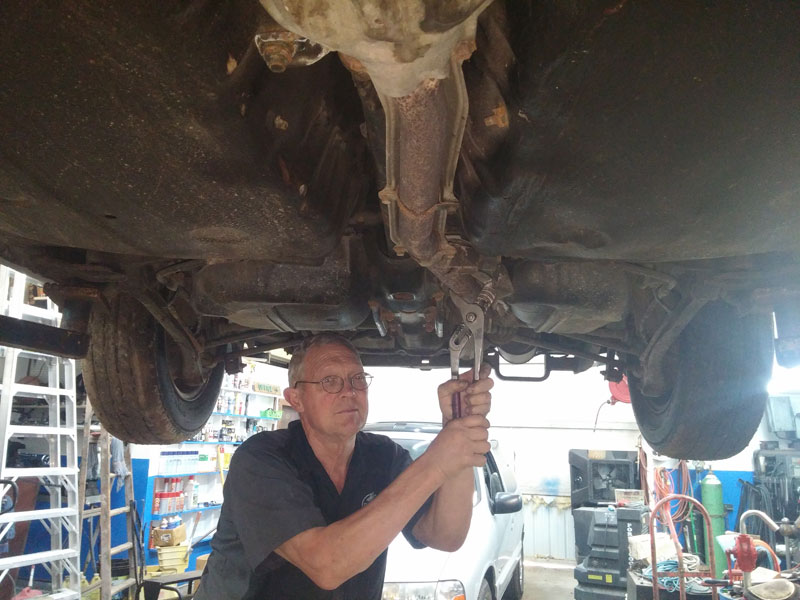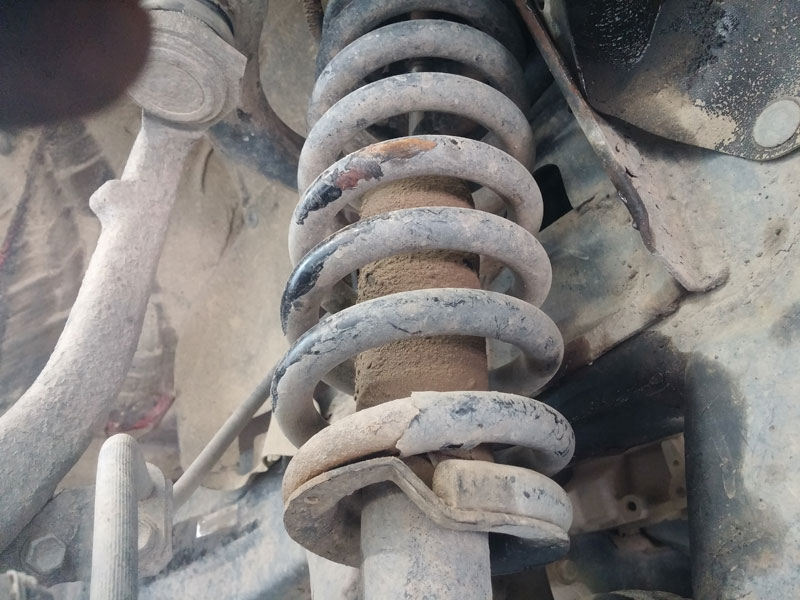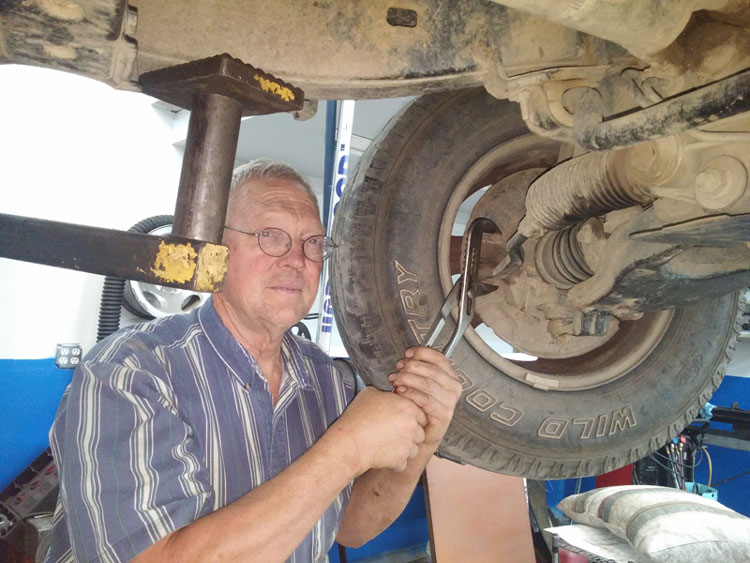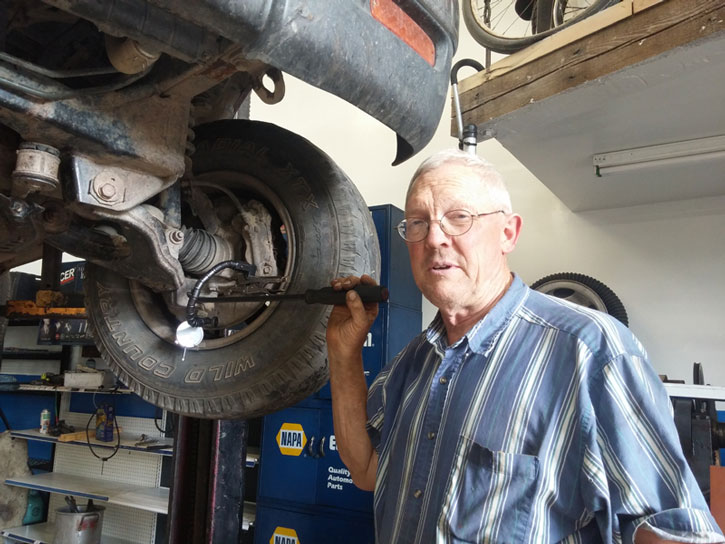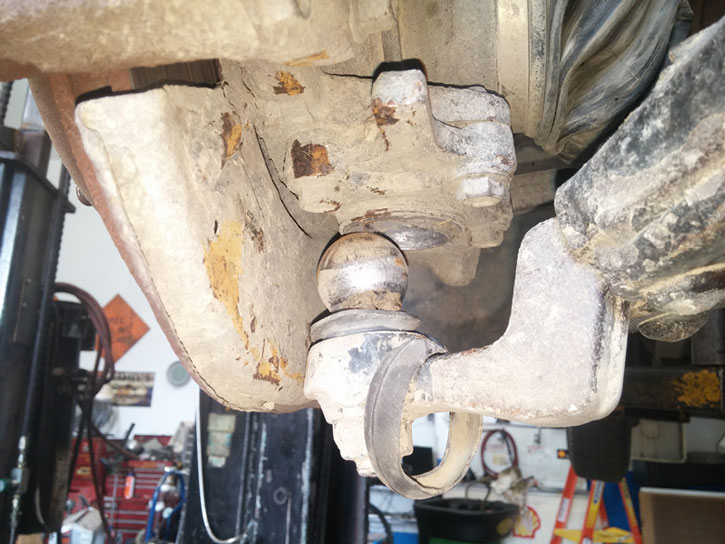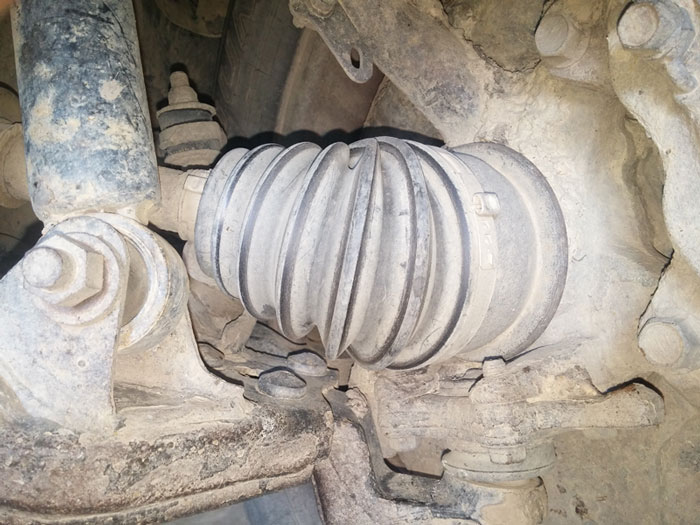Day in and day out, it is routine to bring cars to our bays, do the needed repairs and get on to the next car as soon as possible. Over the years, I have read many articles about the need to do vehicle inspections and have also read the banter that comes along about the techs not being paid for doing inspections. I also am very aware about having to do this task after owning and operating a shop for 23 years. Oh, by the way, I was always working on “ultimate flatrate” since I was the shop owner and technician.
It is easy for me to understand why I would not want to do mindless undercar inspections, fill out endless check sheets, then have to write up all the paperwork for my service writer to give to the customer. After all, this stuff takes up a lot of time, time which takes me away from my real duties, fixing cars and making money.
I think I am pretty safe in saying everybody reading this article is a vehicle owner. I would also imagine most of you own more than one vehicle and most of us enjoy driving a well maintained, dependable vehicle. I know I sure do and anytime I have car trouble, I am inconvenienced. This is especially true when my wife is inconvenienced by a car problem, since I now have to take care of problems on both ends. Stop and think about your customers. I think I can safely say your great customers feel the same way. Stop again and think, “why do your great customers bring their car to your shop to have YOU work on them?”
A great way to check the brake lining thickness is with these colored thickness gauges. Don’t let the colors fool you though, the actual minimum brake lining specification is found in service information.
Brake lining specifications found in MotoLogic Service information. This 1996 Toyota Tacoma is listed as 1MM or .039” for the minimum brake pad thickness. The red thickness gauges are 2 & 3 MM thick; Just because the gauge is red doesn’t mean its time to replace the brake pads.
A great way to find thin rotted exhaust system is to give it a gentle squeeze with a pair of pliers. If the pipe is getting too thin to repair, it will flex easily.
You’d do it for family
In this day and age of dependable vehicles, it is way too easy to get in a rut of just fixing what is on the ticket, in other words, just doing what you are told, nothing more and nothing less. I think our great customers deserve a little more than the minimum. Now we are back to using the check sheet to do the vehicle inspection, or are we?
Stop and think about our daily jobs and how different they would be if we as techs made a game out of our daily duties. Now if this was the case, we would be playing all day instead of working. Our goal in this business of fixing cars is to not only take care of our customers’ vehicle needs, but to also keep vehicles in good running order with a long life. Therefore, it is imperative that someone do much needed vehicle inspections. This is something that should not be left up to our great customers to ask for; it must be done in our service bays.
Our vehicle inspections can be made as complex or simple as need be, but what is really needed to keep a vehicle on the road for a dependable 200,000 to 300,000 miles? I don’t think there is any one answer, since vehicles driven in the winter salt brine of upper Michigan will have different needs than a vehicle driven in the ultra-rust free conditions of Phoenix, Ariz. The bottom line is that inspections need to be done and it is up to us, the car care professionals, to do them.
My shop, my town, my approach
I live in a rather rust-free environment of the Pacific Northwest, so I have never seen a vehicle frame rusted apart. The basic undercar needs of all vehicles are proper tires, brakes, steering, suspension and exhaust. Once the car is back on the ground, we need to open the hood and have a look around there also.
Back to this game of fixing cars — the vehicle inspection starts as we walk through the parking lot to get the car. Many times it is easy to see if the tires are badly worn and the condition of the body. Are there any fluid drips on the pavement under the vehicle? Is any of the glass cracked or broken? Are any of the lights broken? How does the vehicle look overall? When you stick the key in the ignition, does the key slip into the ignition switch and turn easily? When the key is turned to the start position, does it turn easy? These are all things that are easy to do and take no time; we just need to be observant.
When the key is turned to the start position, does the starter engage smoothly and does it turn the engine at the correct speed? Is the cranking cadence smooth? When the engine starts, does it start smooth and idle smooth? What does the exhaust sound like? Does it idle at the correct speed? As you move the shift lever, does it move smooth and easy and as the transmission goes in gear? Does it act normal?
As the vehicle is moved, does the steering system turn smooth and quiet? So far, the vehicle is not in the shop and many different things have been observed. All a tech needs to do is be cognizant of his surroundings and no extra time has been spent or even wasted.
Once the vehicle is in the bay, it is easy to grab a noncontact thermometer and check the temperature of the brake rotors or drums. This is a great way to quickly pick out a dragging brake, but the vehicle must be driven a short distance for this test to be of any value.
Once the vehicle is in the air, the inspection is now taking some of our valuable time. It is time to give the wheels a shake and a spin. Quickly run your hands over the tread surface of the tires and feel for any strange wear patterns or choppy tread surfaces. If you need to measure the tire tread depth, now is a great time to do this.
When it comes to brake inspections, using terms like good, half worn out or OK are not good terms to use. Since we want to be looked up to as automotive repair professionals, using the actual friction material thickness is a great thing to do. When it comes to the minimum thickness of the friction material, the vehicle manufacturer is the place to go for this information. I like to use the gauges shown in Figure 1. Those gauges are quick, easy and accurate. A complete brake inspection is more than just measuring the brake lining. Many times a test drive is required to quickly snoop out brake rotor thickness variation and brake rotor vibration/pulsation issues. This vehicle inspection stuff is now looking like it is getting pretty high tech.
Oil leaks are another story. When it comes to finding oil leaks, there are two things to remember. Most times, oil goes down and back, so start your search for the oil leak at the highest and most forward point of the evidence of oil. Many times, oil dye needs to be added to the oil so the exact place of the leak can be seen. At this point, write a recommendation for more labor time on the ticket, since this sort of testing takes time and money to be accurate. There is nothing worse than doing a repair for an oil leak, only to have it come back with a leak in what seems to be the same place.
When it comes to inspecting exhaust systems, using a pair of large channel lock type pliers to give the exhaust pipes a light squeeze is a great way to tell the condition of the exhaust tubing. Be sure and take a close look at the upper part of the tubes where they go up and over the rear suspension. Many times, the pipes can be rusted out where the condensation forms, in the top part of the pipe bends. Using your ears while plugging the tail pipe up and letting the engine build pressure is also another great way for the quick inspection.
Greasy shock absorber/strut. Many times when the shock dampening unit fails, the rod seal is the part that fails and lets the oil seep from the unit.
Check for tie rod end wear by squeezing the tie rod end with pliers, while watching for the tie rod to compress. A tie rod end that is not worn will not compress.
Motologic service information directs the technician to using a torque wrench to measure the force required to rotate the ball joints. This is a little difficult to do with the ball joints installed in the vehicle.
On to the steering/suspension systems
When it comes to inspecting the steering and suspension, I find things like shock absorbers and struts need both a visual and a test drive. It is easy to see if any oil is leaking from the shock absorber units, but bouncing the vehicle will only find a shock absorber that is totally worn out and has passed the end of its life a long time ago. At this point, the vehicle is unsafe to drive. Even on light trucks with stiff suspensions, the shock absorbers serve a very important purpose and need to be kept in serviceable condition to make the vehicle ride smooth and handle safely.
Tie rod ends and ball joints have several different designs, which require different ways to measure the wear. Most times this will require an assistant and some measuring tools; using your eye is like using a yardstick to measure a crank shaft journal. Since there are several different types of front suspension, you might have to go to your service information to find the correct test procedure and wear specifications. A Toyota pickup uses different testing procedures than a Ford F-250. Looking at service information, (Figure 6), Toyota says to use a torque wrench and measure the turning resistance of the ball joint. To do this job properly would require removing the front spindles from the vehicle. If a job is worth doing, it is worth doing right the first time.
If you want to test for ball joint wear on this 1996 Toyota Tacoma, (Figure 7), you can use a dial indicator and a pry bar. On the lower ball joints, any noticeable movement would be an indication of a ball joint that would not pass the factory torque test. Ignoring ball joint wear will result in disaster. Remember, the steering system and braking system are the two MOST important systems on a vehicle.
While you are still looking at the steering and suspension, pay close attention to the rubber boots on the ball joints, tie rod ends and CV joints. If these are cracked or leaking, the life of the protected part will soon be over.
Four-wheel drive vehicles that use an exposed universal joint in the front drive axle should always get a close look at the joints. Turn the wheels either to the right or left position, then rotate the wheel. Look closely for any signs of light brown rust around the rubber seals. If there is any rust here, the universal joint bearing is running dry and if it is not loose already, it will be loose and rattling in short order.
Measuring ball joint wear with a dial indicator. In this case, the ball suspension spring is attached to the lower control arm. The lower ball joint is on the top side of the control arm, so the load of the vehicle is trying to pull the ball joint out of its socket. This system can be checked with a dial indicator and a pry bar. In this case, there was .005” lateral movement in the ball joint. I would consider this ball joint worn out.
Ball joint that tested its self. This ball joint came to the end of its life and came apart, letting the right wheel about fall off the vehicle. It also yanked the drive axle out of the inner CV joint. This problem could have been found easily if the last person servicing the vehicle had taken a quick look at the ball joints.
Check CV boots for cracking with the wheels turned all the way to the steering lock. This will expose any cracks in the bottom of the folds in the boot.
Moving the inspection upstairs
At this point, the under car inspection is pretty well complete. Many things on this inspection list can be done while performing an under car repair, such as an oil change or tire rotation. All it takes is to be observant of things and do some looking around while you are performing a job that pays well. When you are finished under the vehicle, then lower it back to the ground and take a look under the hood.
Under the hood can also be a gold mine for things to find and fix. I don’t see as many belts and hoses that need replacement that I did fifteen years ago, but the need is still there. Today we have belt idlers and tensioners that wear out along with the belts they keep tensioned. Coolant also lasts a long time these days, providing it hasn’t become contaminated in some way. And remember, it’s not the coolant that wears out, it’s the additive package. Check the acidity of the coolant the same time you’re checking the mixture of coolant to water.
Batteries are another place to look, and is an easy component to test. If there is a lot of corrosion on the battery terminals, something is wrong with either the battery or the charging system. At this point, it might be a good thing to recommend a starting and charging systems analysis to find what the real problem is. Just replacing the battery might fix the symptom, but there could also be a problem with the charging system that is causing the battery failures too. A stitch in time saves nine.
Our great customers should bring their cars to us because they trust us. Give them their money’s worth and give each car a great honest inspection. Your customers will love you for it.

